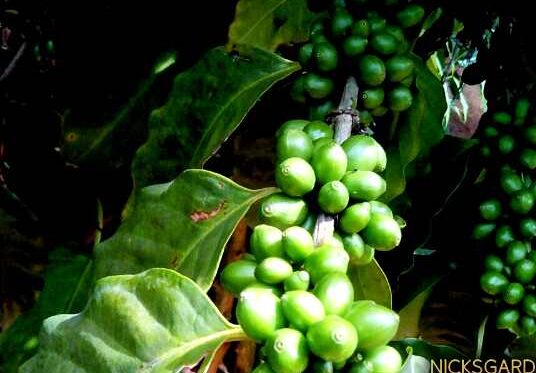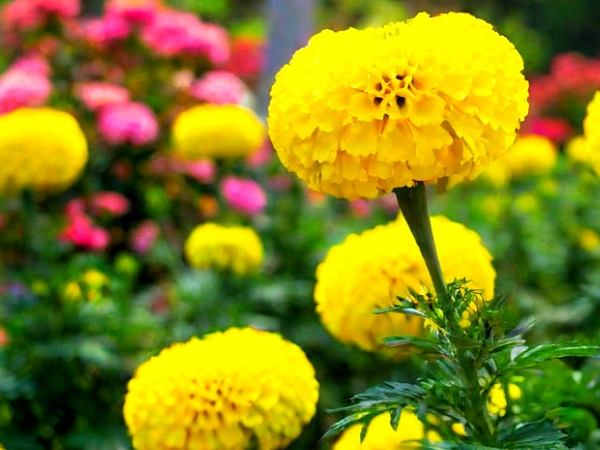COffee Plant
[Coffee Arabica]
NICKSGARDENS®: Unleash the Potential of Coffee Plants in Your Garden
Introduction
The aroma of freshly brewed coffee, a sensory symphony that awakens the senses and invigorates the spirit. For countless individuals, coffee isn't merely a beverage; it's a ritual, a cultural cornerstone, and a source of daily pleasure. Imagine cultivating this beloved elixir in your own garden, witnessing the transformation from delicate blossoms to vibrant red cherries, and ultimately, savoring the fruits of your labor in a cup of homegrown coffee. Let's embark on a journey into the world of Coffea arabica, the plant behind your favorite morning brew.

Botanical Name: Coffea arabica
Common Names: Coffee plant, Arabian coffee
Family: Rubiaceae
Origin: Ethiopian highlands
Invasive Species Status: Not considered invasive
Coffea arabica is an evergreen shrub or small tree, typically reaching a height of 3-4.5 meters in cultivation but capable of growing much taller in the wild. It boasts glossy, dark green leaves that are elliptical in shape and arranged oppositely on the branches. The plant's most captivating feature is its fragrant, star-shaped flowers, which bloom in clusters and exude a sweet, jasmine-like scent. These blossoms give way to vibrant red berries, often referred to as "coffee cherries," each containing two coffee beans.
Coffea arabica is a slow-growing plant that requires patience and dedication to cultivate. It thrives in tropical and subtropical climates with consistent rainfall and well-drained soil. The plant typically begins flowering after 3-4 years and produces a full crop of coffee cherries after 5-6 years. With proper care and attention, a coffee plant can continue to bear fruit for several decades, offering a rewarding and sustainable source of homegrown coffee.
Climate: Coffea arabica thrives in tropical and subtropical regions with consistent rainfall and moderate temperatures. Ideal conditions include:
• Rainfall: 1500-2000 mm annually, evenly distributed throughout the year
Soil Type: The plant prefers well-drained, fertile soil rich in organic matter. A slightly acidic pH (5.5-6.5) is optimal.
Sunlight: Temperature: 15-24°C (59-75°F). Coffea arabica thrives in partial shade or filtered sunlight. While it can tolerate some direct sun, excessive exposure can lead to leaf scorch and reduced yield.
Temperature: The ideal temperature range for Coffea arabica is between 15-24°C (59-75°F). It can tolerate slightly cooler temperatures but may experience growth retardation or damage in prolonged cold spells.
Humidity: The plant prefers moderate to high humidity levels, ideally between 60-80%. Maintaining adequate humidity is crucial for healthy growth and flowering.
Planting: Coffee plants can be propagated from seeds or cuttings. Seeds should be sown in a well-draining seed starting mix and kept moist until germination. Cuttings can be taken from mature plants and rooted in a similar mix. Once seedlings or cuttings have established a strong root system, they can be transplanted to their final location in the garden or a container.
Watering: Consistent watering is essential, especially during the growing season. The soil should be kept moist but not waterlogged. During the winter months or periods of reduced growth, watering can be reduced.
Fertilizing: Regular fertilization is crucial for healthy growth and fruit production. A balanced, organic fertilizer applied every 2-3 months during the growing season can provide essential nutrients.
Pruning and Training: Pruning helps to maintain the plant's shape, size, and
productivity. Regular pruning also encourages new growth and flowering.
Pests and Diseases: Coffee plants can be susceptible to various pests and diseases, including coffee leaf rust, coffee berry borer, and scale insects. Regular inspection and prompt action, including the use of organic pest control methods, can help to prevent or address these issues.
Terraces and Balconies: Coffea arabica can be grown in containers on terraces and balconies, provided they receive adequate sunlight and protection from strong winds.
Indoor Spaces: The plant can also be grown indoors as a houseplant, but it requires bright, indirect light and consistent humidity.
Backyards: In regions with suitable climates, coffee plants can be grown in backyard gardens, ideally under the shade of taller trees or structures.
Culinary Uses: The primary use of Coffea arabica is, of course, the production of coffee. The ripe coffee cherries are harvested, processed, and roasted to create the aromatic beans we grind and brew.
Other Uses:
• The coffee plant's leaves and flowers can be used to make herbal teas.
• The pulp of the coffee cherries can be used to produce cascara, a beverage with a unique flavor profile.
• Coffee grounds can be composted or used as a natural fertilizer.
India boasts a rich diversity of coffee varieties, each with its own unique flavor profile and characteristics. Some popular Indian coffee varieties include:
Kent: A high-yielding variety known for its balanced flavor and aroma.
Sln.9: A disease-resistant variety with a good cup quality.
Cauvery: A popular variety in Karnataka, known for its bold flavor and high caffeine content.
Monsoon Malabar: A unique coffee processed using the monsooning technique, resulting in a mellow flavor with low acidity.
Beneficial Companions: Coffee plants can benefit from being planted alongside nitrogen-fixing plants like legumes, which can enhance soil fertility. Shade-providing trees like bananas or avocados can also create a favorable microclimate for coffee plants.
Plants to Avoid: Avoid planting coffee near plants that compete for nutrients or water, such as fast-growing vegetables or invasive species.
Organic Fertilizers: NicksGardenss® offers a range of organic fertilizers specifically formulated for coffee plants. These fertilizers provide essential nutrients and micronutrients to support healthy growth, flowering, and fruit production.
Conclusion
Coffea arabica, the source of our beloved morning ritual, is a captivating plant that offers both aesthetic appeal and the promise of homegrown coffee. While its cultivation requires patience and dedication, the rewards are immeasurable. By nurturing a coffee plant in your garden, you embark on a journey of discovery, witnessing the intricate processes of nature and savoring the fruits of your labor in every cup.
About NICKSGARDENS®
Ready to embark on your coffee-growing journey? NicksGardenss® offers a wide range of organic gardening solutions and expert guidance to help you succeed.
• Contact us for coffee plant. Visit our shop to browse our selection of fertilizers, and pest control products. [Link]
• Explore our DIY and QA section and learn valuable tips and tricks for cultivating healthy coffee plants. [Link]
• Consider our online consultation services for personalized assistance from our experts. [Link]
Offers And Discount coupons
Don't forget to check Discount and offers section !!!
we will keep adding new products different awesome daily offers!, one day special discounts. Keep checking for new offers, discounts and deals.







